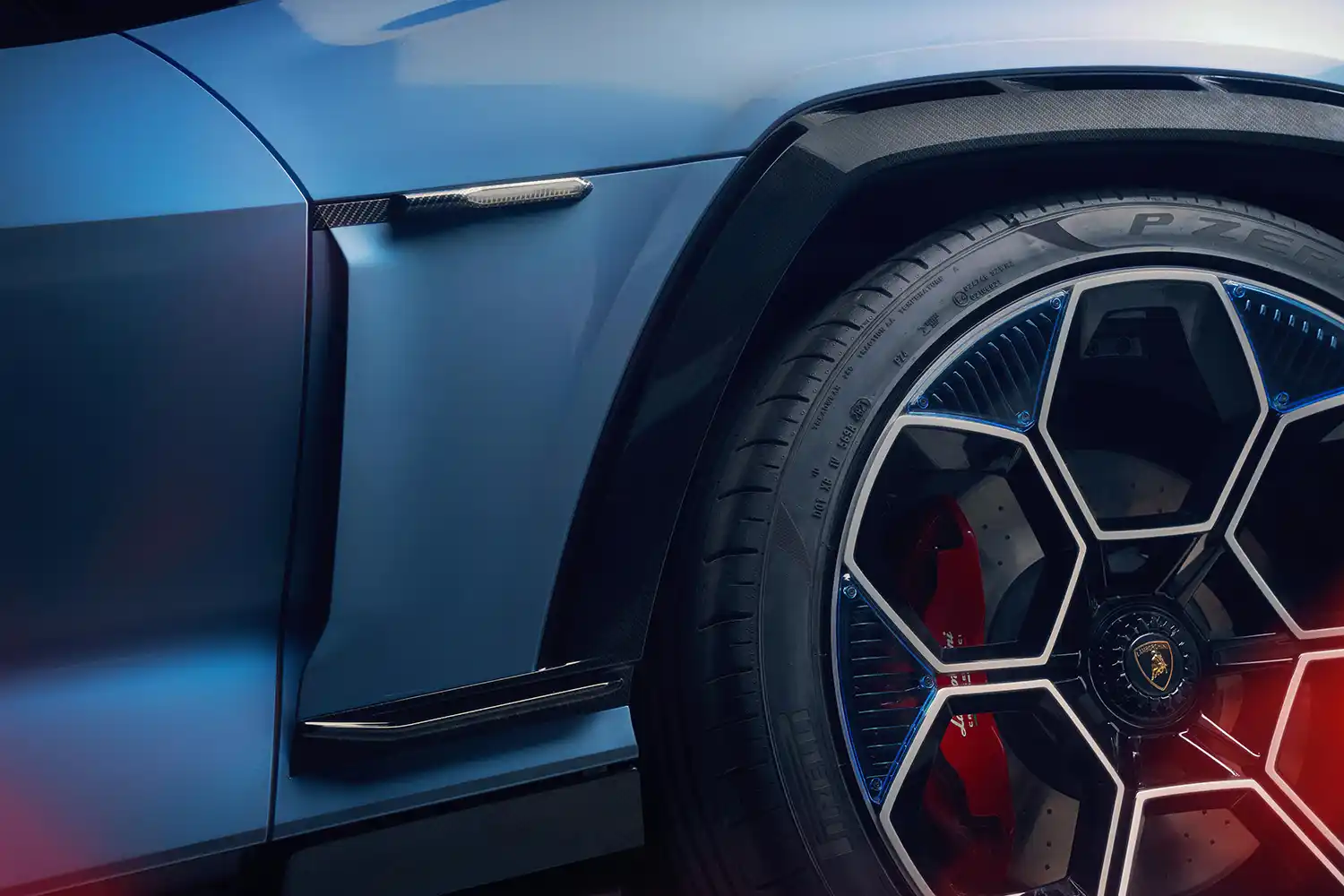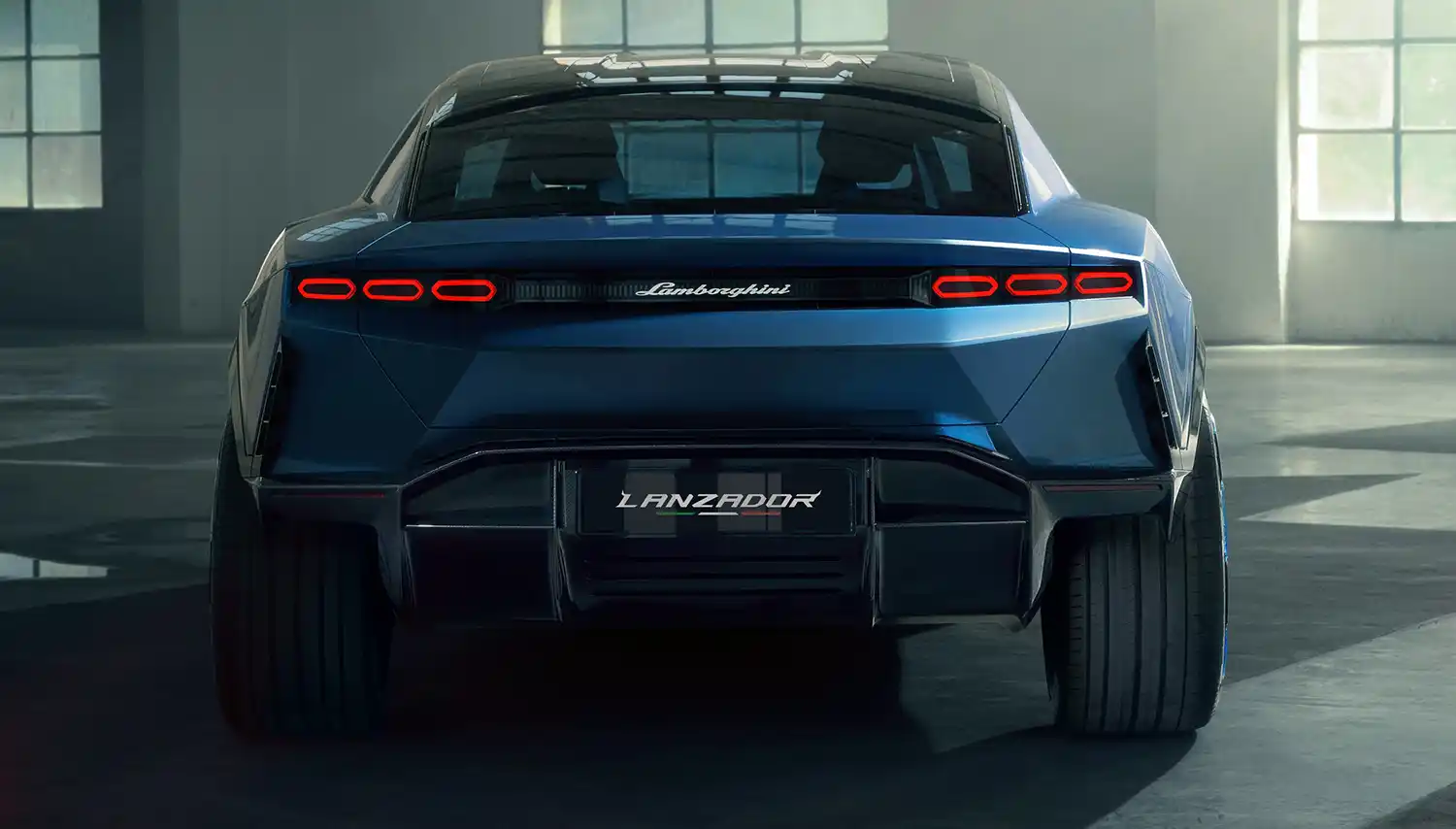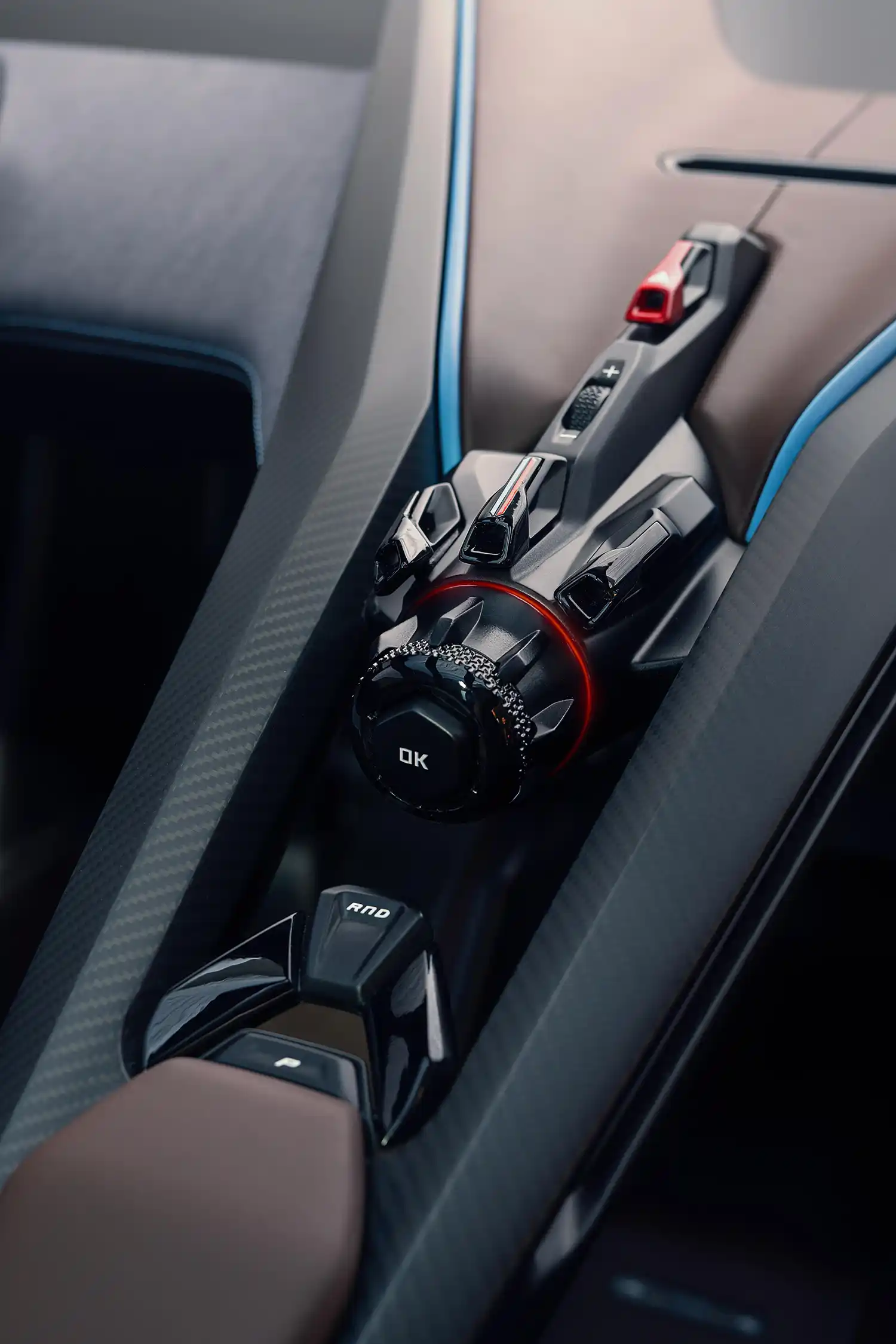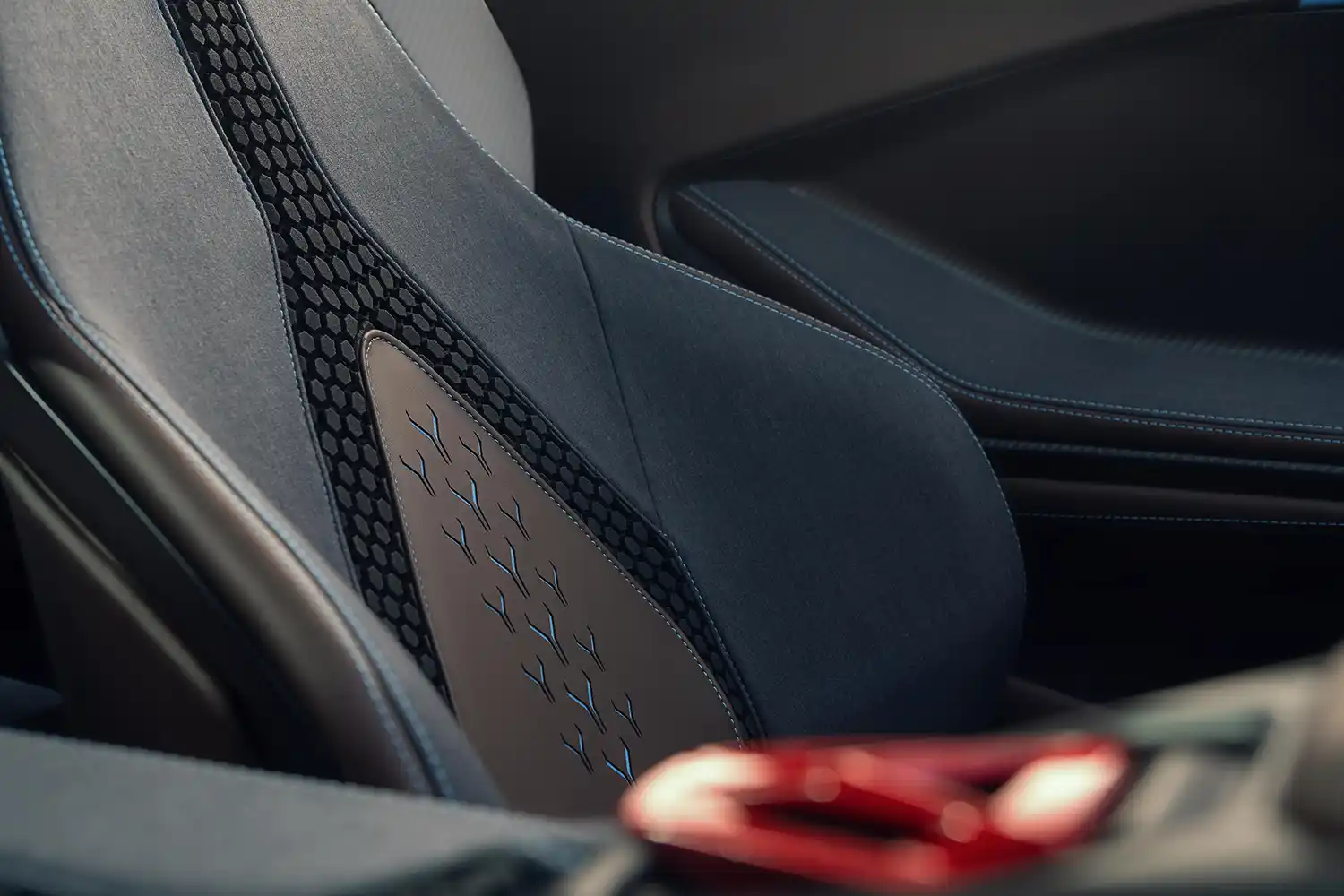
Lamborghini unveils Lanzador concept at Monterey Car Week, a concrete vision of a future purely-electric fourth series production Lamborghini. The Lanzador concept car introduces a high ground-clearance GT with 2+2 seats, featuring clear, purist and technical forms, with a brand-new concept in terms of performance and unprecedented on-board experience, staying true to Lamborghini’s unmistakable DNA and offering best-in-class sportiveness and fun-to-drive character.

The concept car fits in with the Italian super sports company’s “Direzione Cor Tauri” strategy and its roadmap towards decarbonization and electrification announced in 2021: following presentation of the V12 plug-in hybrid Revuelto[1], the Lanzador gives an insight into the series model to be built from 2028. “With the fourth model concept, we are opening a new car segment: the Ultra GT. This will offer customers a new, unparalleled Lamborghini driving experience thanks to pioneering technologies,” said Stephan Winkelmann, Chairman and CEO of Automobili Lamborghini.
The concept car combines the inherent performance of a Lamborghini super sports car with an enhanced fun-to-drive personality, plus the versatility of a car that is drivable daily: the Lanzador creates an original driving experience for a rising cluster of ‘tech forerunner’ customers.

Automobili Lamborghini committed more than two years ago to presenting a high-performance, electrified Lamborghini within this decade that remains true to the heart and soul of the brand. The all-electric concept car is a Gran Turismo with a surprising body style, entirely new proportions and unparalleled on-board experience via new infotainment features, and a pure design combining ultra high-performance elements of the Revuelto super sports car and the animated versatility of an Urus[2].
“With Lanzador we are looking into our future without forgetting our DNA. The first coupés from Lamborghini with their front engines were sporty, elegant Gran Turismos suitable for everyday use as 2+2-seaters. The concept for our fourth production model leverages our philosophy of super sportiness combined with brave new technologies and fearless design, perfectly fitting into our Direzione Cor Tauri strategy,” explains Stephan Winkelmann.
Technology – All-electric drive with variable distribution
Lamborghini presents a concept car that is not only an original Gran Turismo, but above all a preview of future technologies.

A high specific power electric motor on each axle ensures permanent all-electric drive in every condition, surface and driving style and a peak power of over one megawatt. The all-wheel drive also offers active e-torque vectoring on the rear axle for particularly dynamic cornering behavior, extremely finely tuned and adapted for every situation. The energy is provided by a new generation high-performance battery, which also ensures a long range. “For us, electrification does not mean a restriction, but an intelligent opportunity to develop more performance and drivability,” says Rouven Mohr, Lamborghini’s Chief Technical Officer. There will therefore be no compromises in terms of power, driving pleasure and performance: this is an all-electric Lamborghini that customers can enjoy every day.
However, it is not only the hardware components that will define future electrified high-performance Lamborghini vehicles, but also the software and control systems. “Lamborghini will define and differentiate itself in the future through a strategy of all active-control systems. We are taking Lamborghini integrated driving dynamics control to a whole new level, which has not been possible for production sports cars before and offers our customers a completely new driving experience,” explains Rouven Mohr. “Finding the right balance between power, performance, range and aerodynamics is certainly one of the biggest challenges during development, but challenge is a cornerstone within Lamborghini R&D.”

Feel like a pilot
The pilot adjusts the systems himself while driving, via controls on the sports steering wheel. The driver can actively influence the car’s behavior and thus create their own individual vehicle character.
Three factors and control systems are crucial to the concept car and future Lamborghini vehicles:

1. Driving Dynamics Control
The newly-developed Lamborghini Dinamica Veicolo Integrata (LDVI) driving dynamics control system sets a new benchmark for Lamborghini in both the concept car and future production vehicles. Significantly more sensors and actuators will be integrated into the LDVI in the future to create even finer and more precise driving behavior, with crucial innovation not just in the hardware, but also in the control algorithm that manages the components: the more sensors and data fed to the control system, the more refined the algorithm is in delivering the nuances of driving sensations and feedback. This allows the driving character to be more precisely differentiated to the individual driver than ever before: information delivered back to the driver by intelligent sensors positioned behind the new “pilot’s” glass panels mounted at the front of the car, giving a taste of future radar technology.
2. Active Aerodynamics
Active aerodynamics play an even greater role in battery electric vehicles than in super sports cars: active aerodynamics can increase the range per battery charge while also improving performance. Precise downforce for higher cornering speeds and the lowest possible air resistance at top speed can be variably adjusted on the Lanzador, for the best performance in each case. Lamborghini’s future philosophy “Vision of Smart Aerodynamics” is highlighted in the concept car, with the aim of adapting Aero to each driving situation to be consistent with driver requests and range needs.

Inspired by Lamborghini super sports cars models, the newly-developed smart aerodynamics incorporates the ALA (Aerodinamica Lamborghini Attiva) system: the well-known technology used in the Huracán Performante and Aventador SVJ, together with new active aero devices in the front and rear to ensure the best efficiency in the concept car’s Urban mode and the best downforce in Performance mode. The future vision for Lamborghini’s ALA system blowing the diffuser is the evidence of the continuous disruptive improvement by Lamborghini R&D to achieve for best aero efficiency and range extension.
The active aerodynamics system utilizes the front air shutter and a movable splitter, which when deployed opens brake cooling ducts and cooling vanes to achieve the best performance. The S-Duct at the front, together with the concealed louvers for wheelhouse ventilation and the air curtain, improves downforce depending on the mode set: Efficient or Downforce. With the air outlets, Lamborghini prevents the dynamic pressure in the wheel arches from lifting the front of the car at high speeds. The visually concealed louvers therefore provide downforce without creating additional drag. On the 23-inch wheels, the designers combine hexagonal elements with aeroblades to minimize turbulence at the wheels.

At the rear, depending on the drive mode, narrow airblades extend out of the sides and from the diffuser to improve aerodynamic downforce in conjunction with the flow-through rear blown spoiler. In Efficient mode, the laminar flow is against the body over the full length of the outer skin until it breaks off in a defined way at the rear, and the ALA system is fully functional to increase pressure recuperation to the back, significantly reducing drag and increasing efficiency.
3. Active Suspension
Thanks to an active chassis including a steerable rear axle and air suspension, the Lanzador optimally tunes itself to every road situation or follows the previously defined setting of the driver’s style, quickly and directly adjustable during the journey via the controls on the steering wheel.

Torque Distribution
A key advantage of electric sports cars with two motors is the precise torque distribution for enhanced driving dynamics. In the Lamborghini concept, the control element calculates the necessary or desired torque for each axle individually within milliseconds, with the two motors differentiating and serving the left and right sides on the rear axle.
Wheelspeed Control
With Wheelspeed Control, Lamborghini very finely regulates power and force at the individual wheels for even more precise turn-in, and direct as well as fast driving on particularly winding roads and with strong acceleration.

“The combination of these systems raises the driving behavior of the concept car to a new level compared to a super sports car with a combustion engine: it is an electric, super-intelligent Ultra GT,” says Rouven Mohr. “With the newly-developed and highly-integrated driving modes, including active controls, Lamborghini increases driving pleasure and performance, and enhances safety and feedback to the pilot.
“I am sure that with the concept car and the technology it contains, we will convince loyal, but also tech-forerunner clients, that the new generation of Lamborghini vehicles will open a new chapter in terms of technology, performance, digitalization and driving dynamics,” explains Rouven Mohr.
Design – Expect the Unexpected
Lamborghini is synonymous with unique and absolutely recognisable design DNA, taking the iconic single line silhouette and translating it into a visionary and forward-looking approach.

With the Lanzador Lamborghini looks into the future. The concept car describes new proportions and represents a new car segment: the Ultra GT, seen not only in the exterior but in the interior’s innovations, offering a new Lamborghini experience in terms of space and roominess.
The design of the GT concept car is inspired by spaceships. Mitja Borkert, Head of Design Lamborghini, describes the start point of the design process from the volumes of a super sports car, but taking it onwards to create a true pilot’s driving position, inspired also by the Huracán Sterrato[3].

The exterior design is brave and unexpected: the taut, clean lines are authentically Lamborghini and full of tension, inspired by legendary Lamborghini models including the Sesto Elemento, Murciélago and Countach LPI 800-4. The side view takes the single silhouette line of Lamborghini in combination with a unique architecture developed for the concept car, with the typical inclination of the cabin seen clearly from both front and rear. At the same time, the design of the car’s lower part is shaped by the smart aerodynamic approach, integrating state of the art movable, yet integrated, components, as found in Lamborghini super sports cars. With a roof of around 1.5 metres, the electrified Grand Turismo sits powerfully low on the road, impressing with its incomparably low proportions created by the forward look of the cabin and the sharp lines featured throughout its dynamic body.
The interior layout strictly follows the ‘feel like a pilot’ design philosophy of Lamborghini, combined with the spaceship idea: it takes the idea of a 2+2 GT but moves that a step forward, creating a 2+2 lifestyle concept where the rear space of the cabin can also be used for carrying all sorts of sports equipment or luggage.

A trunk is concealed under the short and steeply sloping front bonnet, while the large glass tailgate opens wide. Adjustable rear seats and a variable luggage compartment in the rear make the concept car adaptable to almost any everyday situation.
The futuristic concept car’s detailing is sophisticated and reflecting its unique character: the slim headlights take inspiration from the Countach LPI 800-4, while the hexagonal-shaped taillights include the characterful light signature with three LED elements on each side. The typical stylistic elements such as the Y and the hexagon, which have characterized Lamborghini’s design from the very beginning, can be found throughout the car including the rear lights and in the interior.

“For me, the Lamborghini Lanzador is to date our most visionary and futuristic concept car, as well as delivering stunning looks and a new kind of beauty” says Mitja Borkert. “The proportions are new and unseen, with the potential to create an entirely new automotive segment. The Lanzador presents supers sports car volumes but with the pilot in a slightly higher position, echoing that of the Huracán Sterrato. It is designed for a new generation growing up in an era of high tech and digitalization, and demonstrates new and fresh ideas within Lamborghini in terms of our approach to authentically integrating sustainability, via an interior delivering more space and using innovative materials. The Lanzador is a brave and unexpected concept visualizing a potential future Lamborghini model, with an emotional design and Lamborghini-performance approach to creating a true Ultra GT,” emphasizes Borkert.
The interior’s pilot position is also defined by a slim and lightweight dashboard that uses iconic design elements such as the large Y-shape used for the center console bridge. With a high level of versatility for everyday use, combined with the performance and seat position of a super sports car, head of design Mitja Borkert created an unexpectedly-roomy interior using the design freedom given by the space of a fully-electric package.

The pilot and co-pilot sit low within the cabin as if in a jet, separated by a centerconsole that visually flows into the dashboard. Positioned within the center console and ergonomically positioned perfectly within the driver’s reach, is a pilot’s unit for control of the entertainment system, climate control and new digital functions. Passengers receive information via the automatically retractable displays. Using the Lamborghini ANIMA control, the driver switches between the different driving modes, including Efficiency and Performance for the best possible driving dynamics.
The concept car is painted in a liquid color especially designed and developed for the Monterey Car Week presentation: a fresh and modern color named Azzurro Abissale.
Sustainable materials
With the concept car, the designers transferred the company philosophy on sustainable materials to the interiors, which are pioneering while not conceding on look, feel, quality and durability. The concept car demonstrates the parameters of today’s technical possibilities and elevates Lamborghini to a new level of sustainability.

The interior is made almost entirely of sustainable materials, all made in Italy. While the high-end Merino wool (from a B Certified Italian company) dresses the dashboard, seats and door panels, the colored thread is made of recycled material regenerated nylon / recycled plastic and many non-visible plastics, such as the foam of the sports seats, are made of 3D-printed recycled fibers. Even the extensively integrated carbon, such as in the center console and door panels, is made of regenerated carbon: a new, two-layer composite material.
Sustainably tanned leather
Sustainable leather is leather that is tanned with special water in a particularly environmentally friendly way. The water comes from olive oil production and has to be treated in waste water treatment plants due to its high acidity and antimicrobial and phytotoxic effect. However, this residual water from olive oil production can also be reused by chemical manufacturers to produce tanning agents: the tanning process shares a “Made in Italy” synergy with the production of Italian olive oil.

100 percent merino wool
Instead of artificially processed wool, Lamborghini uses wool from Australian Merino sheep. Every year, sheep grow a new fleece, making wool a completely renewable fiber, unlike synthetic fabrics, which are industrially produced from non-renewable fossil energy. It is imported to Europe once a year and by ship, which reduces the carbon footprint. The textile is then made by the only Italian fabric company who received the B-corporation certification. Merino wool is biodegradable, supple and soft to the touch.
Regenerated carbon
Regenerated carbon is a new approach on composite materials developed by Lamborghini to fit its DNA and sustainability requirement. The new lay-up approach is based on an aesthetic layer (on the visible side) and several inner layers (structural) according to performance requirements. For the aesthetic layer several kinds of fibers are under development including some natural fibers which are interwoven with carbon. This retains the technical properties of carbon, while at the same time reducing the use of carbon fiber. For the inner layers, Lamborghini has worked on core materials such as recycled carbon, which consist of mat of recycled carbon, or alternatively on foam made of recycled PET. In addition, both aesthetical and structural layers are combined with bio-based resin system enhancing the sustainable approach. This application offers maximum freedom in design and personalization alongside good technical performance.

Synthetic fiber from recycled plastic
Lamborghini uses a new type of synthetic yarn on many components of the concept car, which is partly made from recycled plastic recovered from the oceans: it is finely shredded, washed, dried, pressed under high pressure and processed into thin nylon threads. In the end, these threads end up as regenerated nylon on large rolls for the subsequent production of plastic parts. The big advantage is that the material can always be reused and passes through the production cycle several times: a special kind of resource conservation, meaning that components can be produced without using up new resources. Compared to plastic parts made of petroleum, this is 80 percent more environmentally friendly.
3D Printed Form
A significant aspect of sustainable production and resource saving lies in a new 3D printing process for plastics, such as the foam used in the sports seats. A new printing material for FDM (Fused Deposition Modelling) printing is made from recycled waste, such as used plastic bottles. It is a very versatile material and a stable, harmless plastic, ideal as a base material for 3D-printed seat foam due to its good mechanical, thermal and chemical resistance and its ability to be used elegantly and virtually invisibly under seating fabrics. The material can be recycled again after its useful life. The proportion of recycled material can be between 45 and 100 percent, depending on the origin of the waste.

Lamborghini’s “Direzione Cor Tauri” decarbonization roadmap
Lamborghini has been focusing on sustainable production and the reduction of CO2 for years. Since 2015, the Sant’Agata Bolognese site with its 182,000 m2 of space has been operating as a certified CO2-neutral company. With the decarbonization roadmap “Direzione Cor Tauri” presented in October 2021, the company has committed to at least halving its CO2 emissions from 2025.
“Cor Tauri” is Latin and means bull’s heart. At the same time, it is the name of the brightest star in the constellation of Taurus the bull, which shows Lamborghini the way to an electrified future, but one that remains true to the heart and soul of the brand. “Lamborghini’s electrification plan is a change of course made inevitable by a radically changed context. We want to make our contribution with it and reduce our environmental impact more and more through concrete projects,” said Stephan Winkelmann at the launch.

Lamborghini plans to electrify its entire product range by the end of 2024: the company is investing more than 1.9 billion euros over four years for the conversion to hybrid technology, the largest investment in the history of the Italian brand. The concept for the fourth model is not just a technical demonstrator but also a refined ‘laboratory on wheels’ in terms of sustainable materials. The production version of the concept car will deliver extraordinary performance from 2028 and will be at the forefront of its segment. It will innately maintain the brand’s DNA and elevate Lamborghini’s 60-plus years of tradition into a new decade.
The fourth model concept stands for design, performance and the answer to the question of where Lamborghini is heading in the future. “For us, the fourth model is the absolutely logical extension of the existing portfolio – the perfect link between Urus and our super sports cars,” says Stephan Winkelmann. With the new, fourth model series, Lamborghini will in future offer the perfect portfolio incorporating emotive super sports cars with hybrid engines, and the next Urus generation with plug-in hybrid.

The Lanzador is not a whim of designers and engineers: it provides a concrete preview of the production vehicle that Lamborghini will present in 2028. The series production car based on the fourth model concept will be built in Sant’Agata Bolognese and, to this end, Lamborghini is planning to expand the site and hire additional employees.
[1] The vehicle is not yet offered for sale and is therefore not subject to Directive 1999/94/EC. The fuel consumption and emissions data are in the type of approval stage.

[2] Fuel consumption and emission values of all Urus models; Fuel consumption combined: 14,1-12,7 l/100km (WLTP); CO2-emissions combined: 325-320 g/km (WLTP)
[3] Fuel consumption and emission values of Huracán Sterrato; Fuel consumption combined: 14,9 l/100km (WLTP); CO2-emissions combined: 337 g/km (WLTP)

































The post Lamborghini Lanzador Concept: The Visionary, Rebel, Ultra GT appeared first on Wheelz.me-English.




